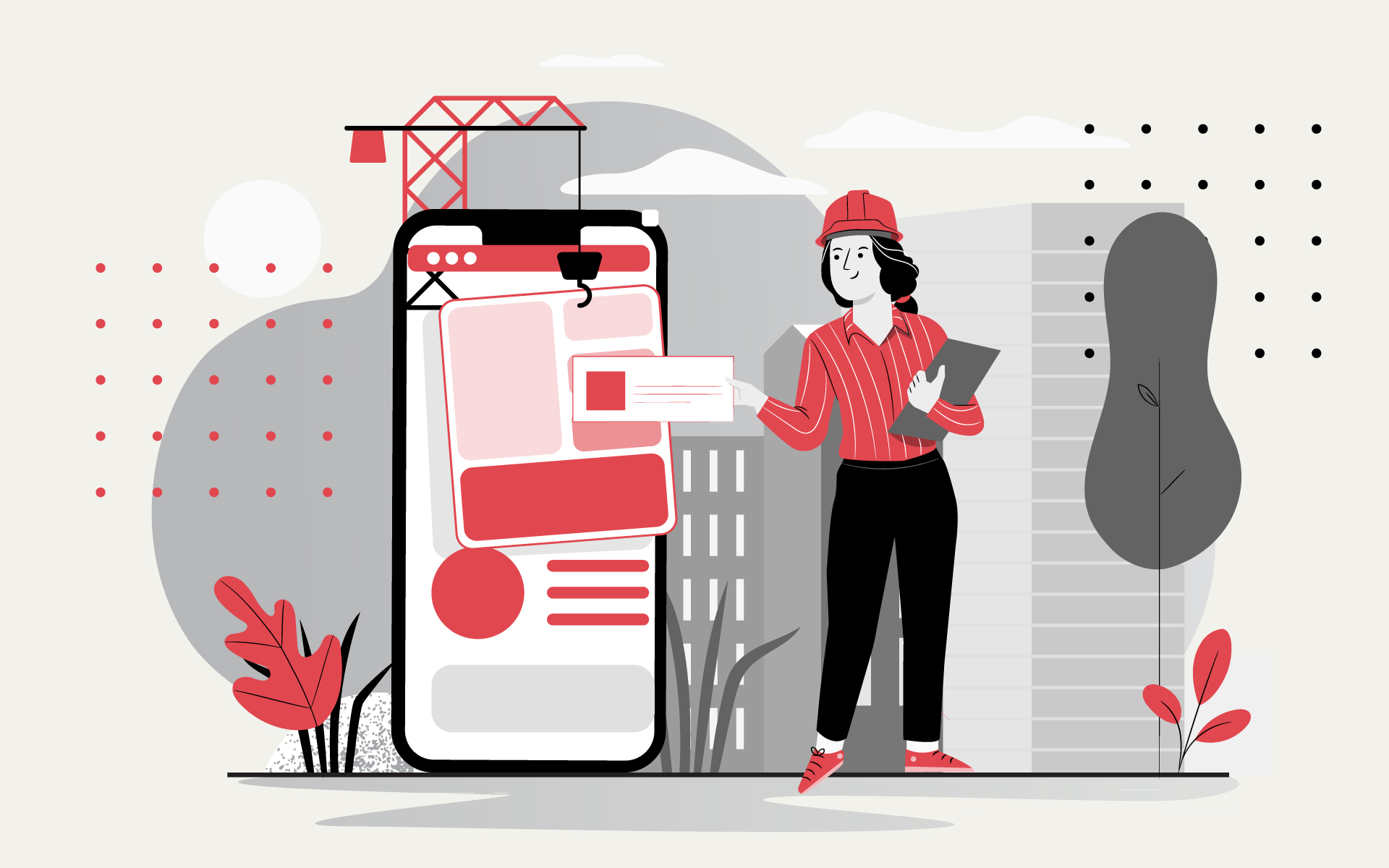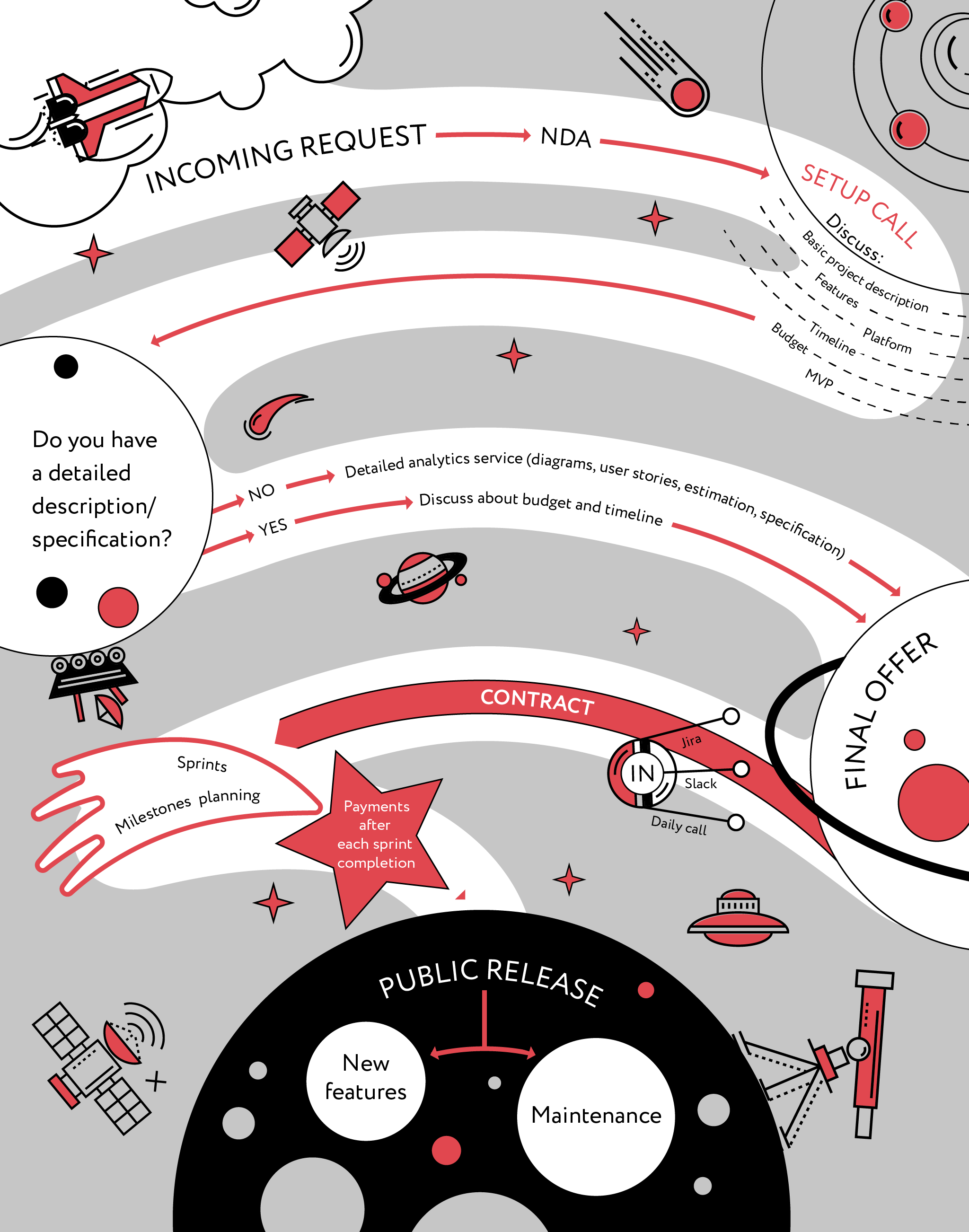 BACK TO ALL
BACK TO ALL

If you’ve ever considered developing an app for your business, it’s likely that you have been challenged by these three basic questions:
- The cost of development
- The quality of development
- Timing
Trusting someone to develop an app of your dreams is like building a house. To make an informed choice about the team, you need to understand how it works.

All development stages can be divided into three main parts: Pre-Development, Development and Post-Development.
Pre-Development Phases
Part 1: Idea evaluation
We have dealt with different client requests: some have approached us with a clear vision of the future project, others would only have an idea in their minds. For customers who already have prepared the basis of the future project, there are several available paths. Each one starts with a scope definition. And then we follow one of the paths depending on the client’s needs and goals.
- If the client already has software requirement specifications we go directly to the design phase.
- In the case that the client has specifications and design we go to the development phase.
- And if the client has an existing application that needs to be revised or completed we can go directly to the code review, refactoring, and then straight to the development.
If the client only has an idea and/or no documentation/design, at this stage the analyst gathers initial requirements and, together with the team, prepares a rough development estimate.
Don't worry: you won't have to struggle alone filling out complex briefs. To optimize the process, we offer a free consultation with our CEO so you can discuss your ideas thoroughly. You are welcome to share your product vision and any wishes considering your project at the session.
Estimated Results of Part 1:
- MVP scope
- Target platforms: iOS, Android, cross-platform
- Rough timeline (start, end)
- Budget range
Part 2: Business Analytics
If our preliminary timing and budget proposals seem right to you, then we can proceed to business analytics. At this phase, we define your business targets, finalize the requirements and complete our detailed assessment of all work stages. Analytics helps businesses and developers achieve a unified vision. At the business analytics stage, we need to understand:
- Who is the target audience
- What is the purpose of the app
- What are its functions
- What is its technology stack
Estimated Results of Part 2:
- Specifying all functional and non-functional requirements
- Preparing the estimation that defines the scope of tasks and the overall project budget
Part 3: Design
Design is one of the most vital parts of the preparation phase, as it largely determines how users interact with your product. That’s why your design needs to be not just visually appealing, but also logical and easy to understand. At this stage, we provide a design prototype : we choose one screen and make three versions of it. You select one of them and we work through the design of the other screens. We provide a detailed elaboration of the interface, which we accommodate to our client’s requests until an agreement is reached.
Estimated Results of Part 3:
- Approving an attractive UI and user-friendly UX
Development Phases
Part 1: Development and QA
Once the design is ready, the logic is worked out, the prototypes are all set and the technical specifications are clarified, the development team begins to implement your idea. We start with the development of an MVP, and then iterate to finalize the product. An example of our code can be seen here.
We make sure the app strictly follows the functional requirements, but since any software has bugs we use manual and automated testing at every stage, on every available device.
You will meet the team together with the project leader before the start. The project leader will be responsible for meeting deadlines, budgeting and the whole implementation of your idea at all stages.
Estimated Results of Part 1:
- Producing the pre-release version of the product
Part 2: Release
We can help you with the release of the application in the AppStore and Google Play, if it is necessary. Once it’s done, we collect application statistics and feedback and use it to improve and polish the user experience.
Estimated Result of Part 2:
- The application is available for download in the AppStore / Google Play
Post-Development Phases
About support
Once the development is complete, Exyte can continue to support the whole infrastructure. As a general rule, we either switch to supporting the product on an hourly basis, or we carry on developing new features for your app.
Have you got an idea for a mobile application? Share it with us and get a free consultation straight away!




